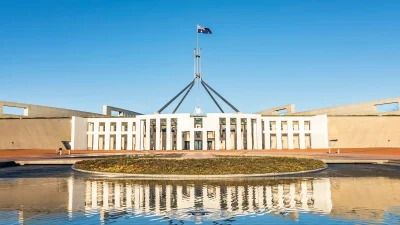Is now time to switch clients from cash to bonds?


Cash and term deposits offer attractive rates for clients, but it may be time to switch back into bonds.
Last year, investors were herding into cash ETFs and savings accounts at the prospect of interest rates as high as 4.75 per cent as the Reserve Bank of Australia (RBA) embarked on a rate hiking cycle.
However, with the prospect of interest rates now moving downwards, Perpetual Private, Janus Henderson and Vanguard believe it is the optimum time to switch into bonds. Rates on one-year term deposits decreased by 0.05 per cent in January as markets priced in global interest rate cuts this year and further decreases are expected.
“There is no need to wait for central banks to cut rates to begin changing up asset allocation as long-term bonds and term deposits are forward-looking and inflation is already trending downwards,” said Perpetual.
Vanguard added: “On the face of it, shifting your portfolio to cash seems like a good idea in this environment. There is no risk in cash and you’re getting the same return you might from bonds – for now.
“But cash is limited in its ability to keep up with inflation, and investing in cash means forgoing risk premium. Investors must also consider the durability of the yield, which is anchored to monetary policy. If central banks cut interest rates, the yield on cash decreases, and you’ll miss out on the income you would have earned if you had maintained your target bond allocation.”
If a recession is to occur, bond prices will rise as interest rates are cut suddenly. If there is a soft landing and rates are cut gradually, then this would also favour bonds due to the inverse relationship between interest rates and bond values.
“Investors looking for capital growth who don’t need capital guarantees should consider introducing bonds into, or back into, their investment portfolio and doing so before central banks begin to cut rates. We have high conviction that bonds will provide better risk-adjusted return outcomes for investors who are able to take on the increased risks offered by bonds,” Perpetual concluded.
Looking at potential returns on offer for clients, Vanguard said it expects a return of almost 5 per cent over the next decade from global bonds.
“Global bond markets have repriced significantly over the last two years as interest rates increased, putting bond valuations close to fair. We expect global bonds to return a nominal annualised 3.9–4.9 per cent over the next decade.”
Alternatively, PIMCO recommended intermediate maturities offer a “sweet spot” between cash and long-duration bonds.
“Given today’s flat yield curves, we believe intermediate maturities can offer a sweet spot between cash, where yields are fleeting and will decline when central bank rate cuts begin, and long-duration bonds, which could face pressure from rising bond supply needed to finance growing sovereign debt.
“Today’s environment underscores the importance of global diversification, prudent risk mitigation, and constructing resilient portfolios through active management. We expect the traditional inverse correlation between stocks and bonds to resume, with the potential for fixed income investments to appreciate if the pricing of recession risk rises again.”
Last year, Money Management wrote how investors were herding into cash ETFs which were one of the fastest-growing segments of the ETF space. However, as the RBA has paused interest rates for the last few meetings, weightings have begun to fall. Australian interest rates were moved to 4.3 per cent in November 2023 and have been held steady at this rate ever since.
As a result, the global fund manager survey from Bank of America found cash weightings are now sitting at 4.2 per cent in April 2024 compared to the highs of 5.6 per cent in May 2023.
In the ETF space, Australian cash ETFs saw outflows of $21 million in the first quarter of 2024 compared to inflows of $191 million in the final quarter of 2023, according to Vanguard. However, those into both Australian and international fixed income ETFs also declined in the quarter, although it remained the second most popular asset class behind international equities.
Global head of client portfolio management at Janus Henderson, Seth Meyer, said: “We believe investors should be positioned for the next phase in the cycle because once markets do move, they are likely to move too fast for investors to react in time. This is important because missing out on the first leg up in a market rally may be one of the most significant drivers of inferior long-term returns.”
Client goals
It is important for financial advisers to determine a client’s goals and objectives when it comes to their assets to determine their long-term asset allocation. Even if no changes to a portfolio are made, it demonstrates that advisers are across their clients’ portfolios and willing to make changes if necessary. It also helps to explain the market environment to clients, particularly younger or less affluent clients who may be navigating their first rate hiking cycle.
Meyer said: “Once goals have been identified and quantified, we recommend investors stick to a strategy with a long-term perspective. In adopting this approach, cash should be seen as an asset to provide for short-term (less than 12 months) liquidity needs. Beyond that, risk assets have on average meaningfully outperformed cash over the long term.
“Market timing strategies are risky due to the opportunity cost of being out of the markets. Similarly, waiting to get back in may prove costly in the long run.”
If clients are reluctant to move back into risk assets or feel there is no need when returns on cash savings are so high, Meyer recommended dollar-cost averaging over a six-month period or investing in a 60/40 portfolio as a low volatility option. Multisector fixed income funds also offer the potential for higher yields than money market ones, while cash plus funds could offer additional yield.
Recommended for you
The FSC and FAAA have pinpointed the small wins and losses in Treasurer Jim Chalmers’ third budget, noting that successfully achieving change can be a "hard grind" for the profession.
After years of low rates, three younger fixed income specialists have shared how they navigated “one of the toughest environments for investment decision-making” in the form of their first interest rate hiking cycle.
The global nature and geopolitical threats involved in investing in emerging markets can mean the job of an emerging market manager entails additional challenges than its developed markets counterpart.
Australian financial advice firms are increasingly looking towards outsourcing as a tool to optimise their business, two industry professionals share, freeing advisers to focus more on client-facing duties.
















Add new comment